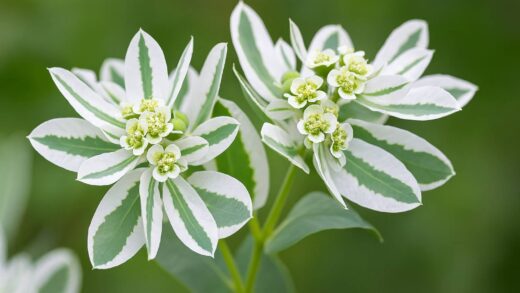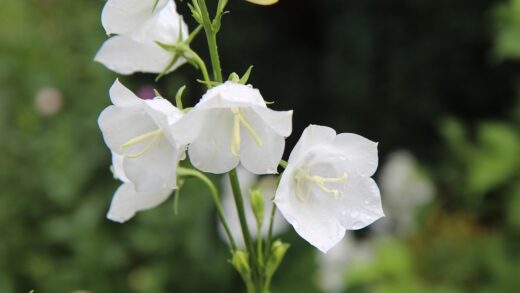The topic of pruning and cutting back gladiolus requires a nuanced understanding, as these plants are not pruned in the traditional sense like shrubs or trees. The management of gladiolus foliage and flower stalks is more about timely removal and strategic cutting to benefit the plant’s health, appearance, and energy allocation. Proper cutting techniques are essential, whether one is harvesting the magnificent spikes for floral arrangements or simply tidying up the plant after its bloom cycle is complete. Each cut has a purpose, from encouraging the best possible display to ensuring the corm is fully energized for the following season. Therefore, knowing when and what to cut is a key aspect of successful gladiolus cultivation.
The primary reason for cutting a gladiolus is to harvest the flower spike for indoor display. This must be done at the right stage of development to ensure the longest possible vase life. The ideal time to cut is when the bottom two or three florets on the spike have opened and the other buds are showing color. Cutting at this stage allows the remaining buds to open sequentially indoors. The cut should be made in the cool of the early morning when the plant is fully hydrated, which also contributes to a longer vase life for the cut flower.
When cutting the flower spike, the technique used is of utmost importance to the health of the remaining plant. A sharp knife or floral shears should be used to make a clean, diagonal cut. The key is to remove the flower stalk while leaving as many leaves as possible on the plant. A common and effective method is to slide the knife down the stem into the sheath of leaves and make the cut, leaving at least four to six healthy leaves behind. These remaining leaves are the plant’s “factory,” and they must be left intact to continue photosynthesizing and nourishing the developing corm for the rest of the season.
Another aspect of cutting back involves the removal of spent flowers, a process often referred to as deadheading. As the individual florets on the spike begin to fade and wither, starting from the bottom, they can be carefully removed. This improves the overall appearance of the plant in the garden, keeping it looking neat and tidy. More importantly, it prevents the plant from expending energy on developing seeds. By removing the faded blossoms, the plant’s energy is redirected towards the development of the remaining flowers on the spike and, ultimately, towards storage in the corm.
Harvesting flowers for arrangements
Harvesting gladiolus spikes for floral arrangements is one of the great rewards of growing them, but the process involves more than just a simple snip. Proper technique at the time of harvest can dramatically extend the life of the flowers indoors and is also crucial for the health of the plant left in the garden. The goal is to harvest a beautiful stem without compromising the corm’s ability to develop and store energy for the next growing season.
More articles on this topic
The timing of the harvest is the first critical factor. For the longest vase life, gladiolus spikes should be cut when they are still mostly in bud. The ideal moment is when the very first floret at the bottom of the spike is beginning to open, or when the bottom two or three have just opened. The remaining buds up the stem should be swollen and showing color. If you wait until more of the flowers are open, the overall vase life will be shorter. Harvesting is best done in the early morning, as the stems are filled with moisture and are cool, which helps prevent wilting.
The cutting technique itself is vital. Always use a very sharp, clean knife or shears to avoid crushing the stem’s vascular tissues, which are responsible for water uptake. It is essential to leave a maximum number of leaves on the plant. A good rule is to always leave at least four, and preferably more, healthy leaves behind. To do this, you can slide the knife or the blade of your shears down along the flower stem, inside the fan of leaves, and make your cut. This allows you to remove a long stem for your vase while preserving the vital foliage on the plant.
Once cut, the stems should be immediately placed into a bucket of lukewarm water. This prevents air from being drawn into the stem, which can create an embolism that blocks water uptake. Before arranging them in a vase, it is a good practice to re-cut the bottom of the stems underwater. Cut about 2-3 centimeters off the bottom at a sharp angle. This fresh cut, made without exposure to air, ensures the stem can absorb water efficiently. Using a floral preservative in the vase water will also significantly enhance the longevity and quality of the blooms.
Deadheading spent blooms
Deadheading is the horticultural practice of removing faded or dead flowers from a plant. In the case of gladiolus, this can refer to removing individual spent florets or the entire flower stalk after it has finished blooming. This simple task offers several important benefits, contributing to the plant’s aesthetics, health, and energy management. It is a key part of in-season maintenance that keeps the garden looking its best and supports the long-term vigor of the corms.
More articles on this topic
As the gladiolus spike blooms from the bottom up, the lower florets will begin to fade while the upper buds are still opening. To maintain a fresh and attractive appearance, these withered individual flowers can be carefully pinched or snipped off. This prevents the plant from looking ragged and focuses visual attention on the fresh, vibrant blooms that remain. This type of selective deadheading is purely for aesthetic purposes but can make a significant difference in the overall look of a floral border.
From a botanical perspective, the primary purpose of deadheading is to prevent the plant from setting seed. The ultimate goal of any flower is to be pollinated and produce seeds to ensure the next generation. This process requires a tremendous amount of energy from the plant. By removing the spent flowers before they can develop into seed pods, the gardener effectively short-circuits this process. The energy that would have been used for seed production is then redirected and conserved, primarily for the benefit of the corm.
This redirection of energy is crucial for gardeners who wish to overwinter their gladiolus corms. A corm that has been able to reabsorb all the energy from the leaves without having to support seed development will be larger, healthier, and have more stored resources. This directly translates to a more robust and productive plant in the following season. Therefore, while deadheading individual florets is optional, cutting back the entire flower stalk once all the blooms have faded is a highly recommended practice for the long-term health of your gladiolus stock.
Cutting back the entire flower stalk
Once the entire gladiolus spike has finished its blooming sequence and all the florets have withered, it is time to cut back the entire stalk. This is a distinct process from harvesting a fresh stem for a vase and is an important step in the post-blooming care of the plant. The removal of the spent stalk serves both aesthetic and horticultural purposes, tidying the plant’s appearance and signaling the next phase of its life cycle, which is focused on corm development.
The flower stalk should be cut down close to the base, where it emerges from the fan of leaves. Use clean, sharp pruners or a knife to make the cut. It is critically important not to cut back the foliage at this time. The leaves must be left intact on the plant. These leaves will continue to be photosynthetically active for several more weeks or even months, depending on the climate. They are working to capture sunlight and produce the energy that is being sent down and stored in the new corm developing underground.
By removing the spent flower stalk, you eliminate the possibility of the plant forming seeds, which, as mentioned, is a major drain on its energy reserves. This ensures that all the energy produced by the leaves for the remainder of the growing season is directed exclusively to building up the corm. A well-nourished corm is the key to the plant’s survival over winter and its performance in the subsequent year. A large, plump corm will produce a stronger plant with a more impressive flower spike than a small, depleted one.
The removal of the old flower stalk also improves garden hygiene. The decaying floral tissue can become a breeding ground for fungal diseases like botrytis, which can then spread to the healthy leaves or to other plants. By promptly removing this decaying matter, you reduce the amount of potential inoculum in the garden, contributing to a healthier overall environment. This clean-up is a simple but effective part of an integrated disease management strategy.
End-of-season foliage management
The management of the gladiolus foliage at the end of the growing season is the final “pruning” step and is a crucial part of preparing the plant for dormancy. The primary rule during the post-blooming period is to allow the leaves to continue growing and to remain on the plant for as long as possible. The foliage should not be cut back, braided, or tied up while it is still green, as this would interfere with its ability to photosynthesize and feed the corm.
The leaves should be left on the plant until they begin to naturally turn yellow and brown. This color change is a clear signal that the foliage has completed its work of nourishing the corm and is beginning to senesce. This process typically occurs in the autumn, often accelerated by the cooler temperatures and shorter days, and sometimes prompted by the first light frost. Cutting the leaves back while they are still green would be akin to starving the corm of the final energy stores it needs for the winter.
In regions where the corms must be lifted for winter storage, the foliage is cut back at the time of digging. After the first frost has browned the leaves, or about six to eight weeks after flowering has finished, the corms can be lifted. At this point, the stems and leaves should be cut off about 2 to 5 centimeters above the top of the corm. This remaining stub provides a convenient handle for managing the corm during the curing process. The removed foliage should be composted or discarded, especially if there were any signs of disease during the season.
In the rare case of very mild climates where gladioli are left in the ground over winter, the dead foliage should still be cleaned up and removed from the garden bed once it has completely died back. Leaving the decaying leaves on the ground over winter can create a haven for pests, such as thrips, and for the overwintering spores of fungal diseases. Good garden sanitation at the end of the season is a key preventative measure that helps to reduce the incidence of problems in the following year.

















